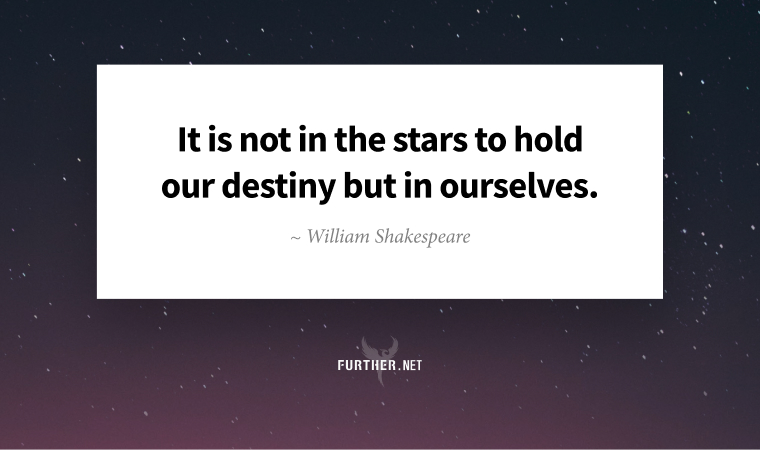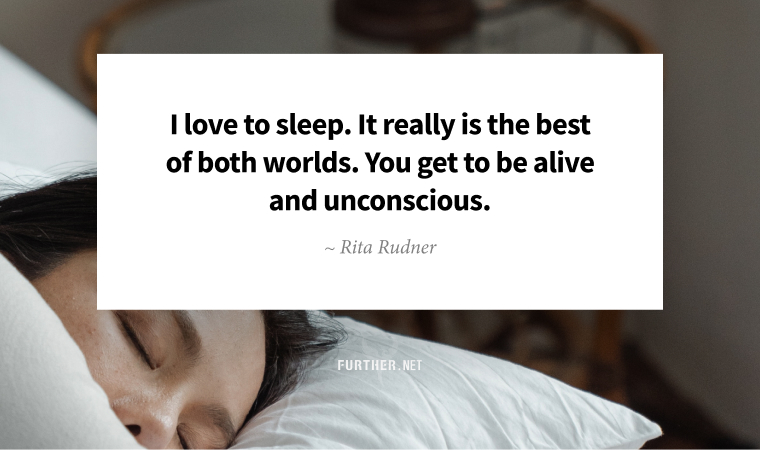
Thinking about the future can be nerve-wracking. Especially when we can’t anticipate how accelerating change is going to impact our lives.
So we try to predict the future, usually relying on pundits and prognosticators to tell us what’s going to happen. Truth is, no one can predict the future, because the future is not something set in stone that can be predicted.
The future is created. It’s created by people like you and me. And when it comes to your own personal vision for your future self, only you can create it.
Problem is, too many people let things happen to them. They fool themselves into thinking they know what the future will look like, because it provides a comforting sense of control (up until we realize we were wrong). When the curtain is pulled back, though, the loss of control ends up being worse than if we never had any at all.
And why does this happen? Because we’re not actively creating our future selves. When we think about who we are in the present, we’re really thinking about the past. Our memories of the past, whether good or bad, dominate our brains.
Of course, we know the past is gone and so is the person who experienced that past. The reason why true change is so hard is because even though we logically know the past doesn’t control our future, we stay mired in it anyway.
Don’t beat yourself up about it, because that’s how our brains are wired. In fact, neurological scans reveal that we think of our future self as if it’s an entirely separate person:
Unsurprisingly, people’s brains were most active when thinking about their current selves and least active when thinking about a current other. But Hershfield’s team found that participants’ brain activity while considering their future selves more closely resembled brain activity while thinking about a current other rather than the current self.
The story that makes up our sense of self comes from remembering the past, while intentional change comes from imagining your future. Because it’s easier to remember than to imagine, we’re led to believe that who we are at that moment is the final destination of who we’ll ever be.
So how is it that some people intentionally evolve into future versions of themselves that are significantly different? They force themselves to imagine instead of defaulting to remembering.
In other words, you shift your focus so that the person you want to become is the person you are … albeit in a transitional phase. Meaningful change happens when you decide to shift your identity to the type of person you want to be.
Step one is to accept that you have to proactively create the future self your want. You can allow life to just happen to you, but you can’t expect it to turn out how you’d like.
Next, begin by specifically imagining where you want your future self to end up. Aristotle called this teleology, which is the study of matters with their end or purpose in mind. Fans of Stephen Covey will recognize the concept from The 7 Habits of Highly Effective People.
Finally, map the steps it will take to get there. And take the first step right away, keeping firmly in mind your desired destination rather than the journey you’ve been on previously.
Like a lot of things, it’s simple when laid out. But simple is not always easy. Just remember that the person on your current path is not the person you were before, and keep your vision for the next version of yourself top of mind.
Change is going to happen. Wouldn’t you rather create it than be simply subjected to it?
Keep going-
P.S. I tweaked the newsletter format a bit. More good stuff below.
P.P.S New to Further? Join us here.
“Isms” In My Opinion Are Not Good
We’ve talked about the perils of ageism before, and with the over-50 population becoming a dominant aspect of our society, the adverse effect is more than only individual. The best solution is to get a boss that will always value you (and that’s you).
America’s workforce is Graying, and Ageism Could Cost the Economy Trillions of Dollars
Sleep Running
Not getting enough sleep will literally shorten your life. And we know that exercise can help you sleep better. Oddly enough, though, it appears that exercise also counteracts the negative longevity effect — even if your sleep doesn’t improve.
Poor Sleep is Really Bad for Your Health. But We Found Exercise Can Offset Some of These Harms
All Ages Party
As I said above, Gen Xers can avoid ageism by starting their own thing, and we seem to be well-equipped for it. Here’s a story about a Gen-X founder who knows better than to discriminate against those older or younger in his hiring practices.
Why This Founder is All In on a Multigenerational Workforce
There Is No Spoon
The escalating mental demands of operating in 2021 represent the latest stage of a trend that has been picking up speed for more than 100 years, as we can’t really push our brains harder. Fortunately, there is an alternative. It entails inducing the brain to play a different role: less workhorse, more orchestra conductor.
How to Think Outside Your Brain
Rest Well for a Long, Happy Life

By Trudi Roth
When it comes to preventing illnesses and increasing healthspan, sleep is one of the big three, along with diet and exercise. A little rest goes a long way — experts say most adults need just seven hours of sleep daily.
Meanwhile, the CDC says one in three Americans is sleep-deprived, increasing the risk of diabetes, stroke, cardiovascular disease, and, according to new research, dementia.
Not that this is news-news. Thanks to everything from job instability to financial stress, caregiving, and other pressures, we Gen Xers often can’t catch enough Z’s. My friends and I trade sleep aids the same way we swapped Wacky Pack stickers as kids.
Luckily, sleep issues aren’t just a modern-day phenomenon. There are proven homeopathic remedies used for thousands of years worth exploring.
Valerian’s Natural Lull
I’m a bit biased towards valerian root, prescribed to me by a chiropractor for use as a natural muscle relaxant after a bad car accident. Used for centuries across Europe and Asia, this potent (and pungent) herb has scientifically proven medicinal properties.
Valerian creates an oasis of tranquility by triggering the release of special chemical messengers, such as GABA (short for gamma-aminobutyric acid) into the brain. This calms the activity of excited brain neurons and prevents them — and you — from becoming overstimulated.
So, while I came for the muscle spasm relief, I stayed for the drowsiness valerian induces. It supports “sleep hygiene” by naturally easing stress levels.
Valerian is also traditionally used to treat headaches, hormonal-related discomfort like cramps and hot flashes, and decrease high blood pressure, among other uses.
All told, it gets to the root causes of sleeplessness.
Additional Alternatives
You’ve probably heard about the R&R benefits of CBD and the sleep-related hormone melatonin (vaping of which is now a thing — please don’t trade lung function for 40 winks). Here are a couple of other herbal remedies to consider:
Ashwagandha: Traditionally used in the 3,000-year-old medicine system, Ayurveda, Ashwagandha has both anti-anxiety and anti-inflammatory properties. Studies show it can help reduce fatigue and stress, and it promotes drowsiness and sleep.
Magnesium: Like valerian, magnesium helps your body maintain GABA levels, supporting your body in producing sleep-related chemicals. It also assists in calming the nervous system and improving its efficiency. Muscle relaxation, nerve function, and dopamine levels are all affected by magnesium, too, which may help alleviate insomnia and promote sweet slumber.
Like any other medicine, please consult your doctor before using herbal remedies. And, of course, you can always try meditation as an alternative to the alternatives.
After all, what all of these ancient treatments have in common is they help relax the eyes-open stressors. And that’s what really paves the way to better shut-eye.
10 Relaxing Benefits of Valerian (Alive)
further: flashback

Janet Jackson – Nasty
Control, 1986
“No, my first name ain’t baby. It’s Janet … Miss Jackson if you’re nasty.” (YouTube)
further: sharing

Further subscribers earn cool gear simply by referring friends to join the newsletter. Get your own free weekly dose of health, wealth, travel, and happiness advice here.
Thank you for sharing Further!
